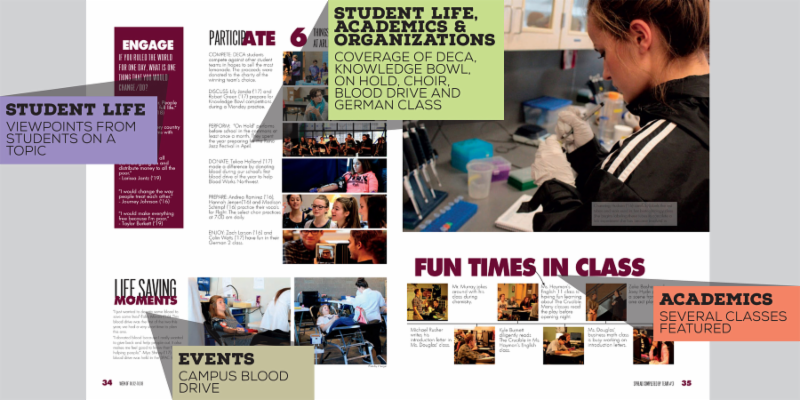
Blended coverage provides an alternative way to cover academics, clubs and sports in a more balanced and realistic way. It’s also allows coverage of multiple groups in less space.
The most common ways to blend coverage are by chronology or similarity. A chronological blend explores what happens on a given day, week or month. A December spread might focus on studying for exams, semester end projects, Christmas parties and holiday volunteering opportunities. A blend based on similarities provides a topical approach. A game day spread could feature fans, cheerleaders, athletic trainers, football managers, the band and the dance team.
Employing a blended coverage approach provides more balanced and realistic coverage. It moves the focus to actual activities classes and clubs do, eliminating dull meeting and classroom photos. It also allows more active groups to receive additional coverage spread throughout the book.
Consider these blended coverage ideas:
- A November spread could feature class projects, the final district football game, things to be thankful for and Black Friday shopping.
- A projects and presentations spread allows multiple academic classes to mingle on the same spread and creates better picture opportunities.
- A fundraiser, T-shirt or holiday party spread could focus on small clubs that don’t have big events or activities.
- A volunteering and leadership spread would showcase organizations which take a strong role in student government or participate in volunteering opportunities.
- Freshman and junior varsity teams could share space on the same spread, substituting the traditional story for mini-stories, Q&As or quotes to provide coverage for two, three, even four or five teams.
Not sure how to get started? Learn the step-by-step process of blending coverage and see examples of blended coverage spreads.

